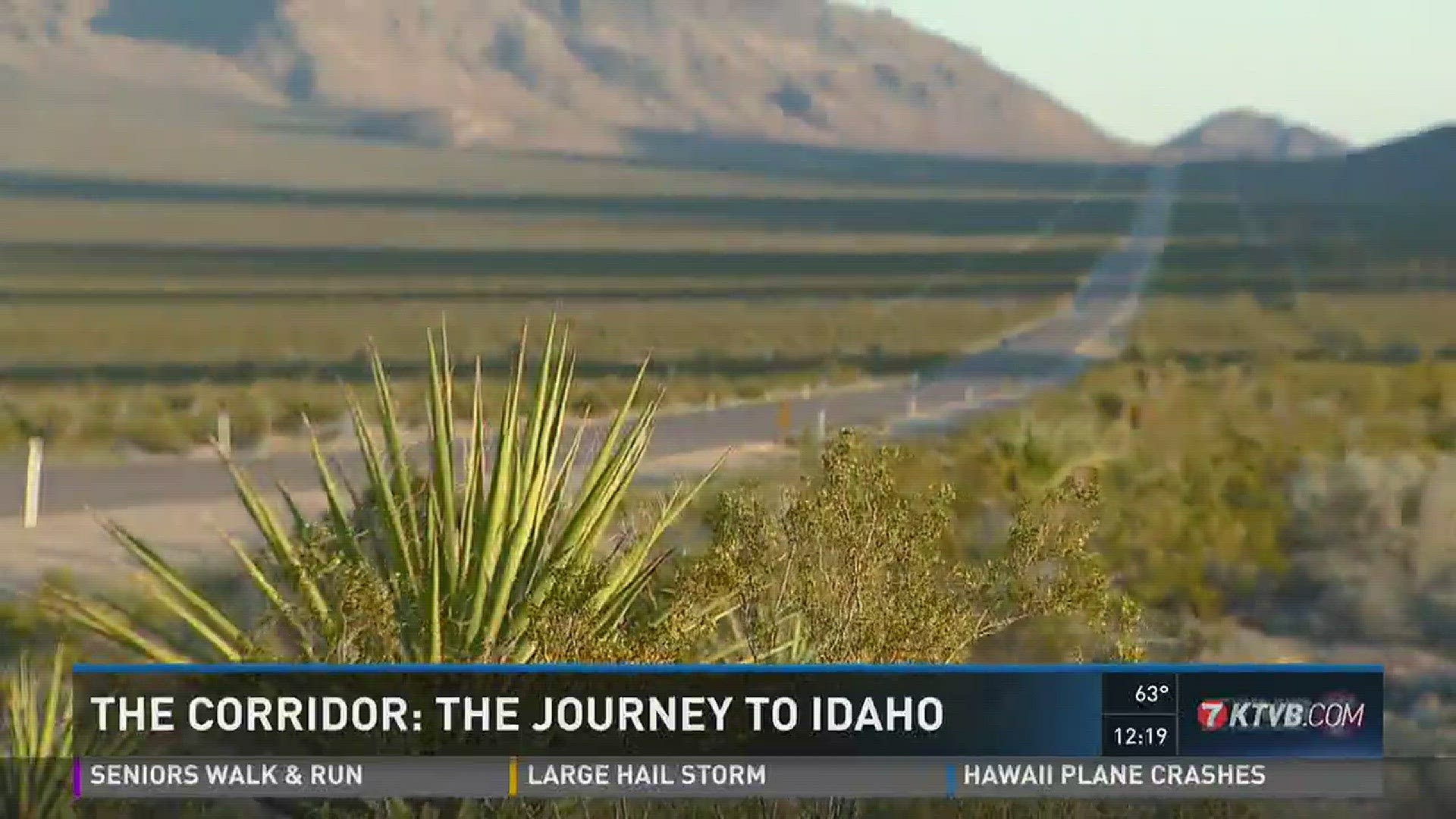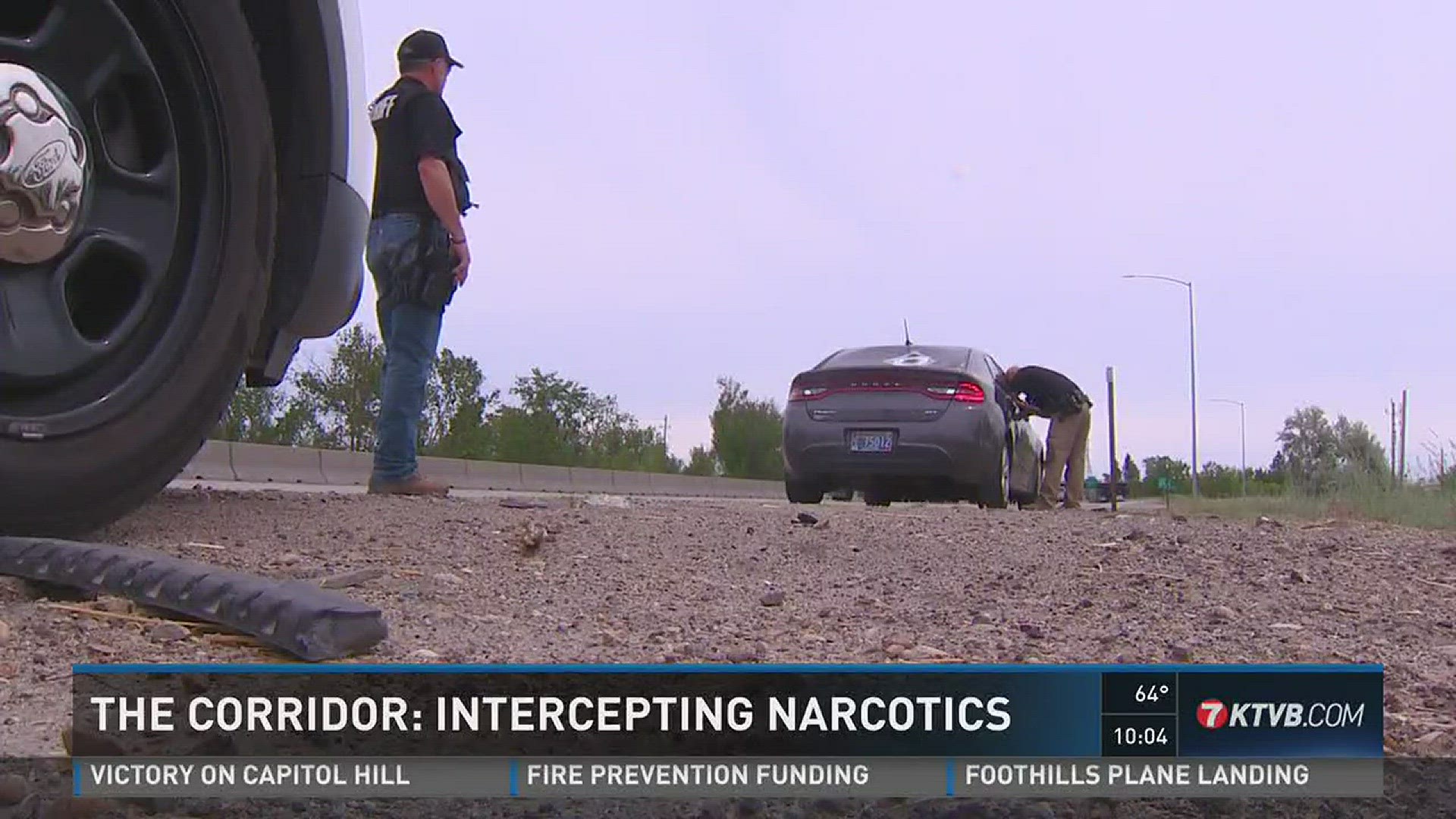CANYON COUNTY, Idaho -- Getting across the border is just the first step.
Once inside the United States, cartel operatives use the network of highways, back roads and interstates to transport their drugs 1,200 miles away to Idaho.
A portion of the narcotics that end up in the Treasure Valley travel up the US Route 93 corridor, according to law enforcement. Smugglers who get on the interstate just north of Phoenix can be in Boise in less than 14 hours.
The route takes them through a long stretch of sagebrush and scrub desert to Las Vegas, then north through Nevada, hitting the Idaho border a little past the 11-hour mark. By the time the mules and their carloads of hidden drugs hit Twin Falls, the route shifts west. Most smugglers take the junction with I-84 to continue the transport into Ada County and Canyon County.
Interstate 5, which sprouts straight north out of Mexico at the San Ysidro Port of Entry and travels up the California coast, is another popular route. Smugglers can supply Seattle or Portland before heading east, distributing through Idaho via I-84 or the less-patrolled Highway 20/26.
"There are numerous routes," Canyon County Sheriff Kieran Donahue said. "It's going to go north, it's going to go west, it's going to go east, but ultimately for us in Idaho, it's going to land in the Treasure Valley."
The flow of drugs earned Ada and Canyon federal distinction as High Intensity Drug Trafficking Areas (HIDTA) last year. The HIDTA designation allots roughly $200,000 per year for advanced training to help local law enforcement recognize and intercept drug transports. The program also funds a special task force and Assistant US Attorney assigned to tackle mid-to upper-level smuggling cases.
Donahue said that although the trafficking corridor label is not one city leaders are going to paste on billboards anytime soon, the HIDTA funding has pumped up Idaho's drug interdiction efforts and collaboration between agencies.
"No one wants that from a tourism standpoint," he said. "On the other hand, the dope is here. We've seen it come up the roads, we know where it comes from. Now we're out here dealing with it."
Chris Gibson, the executive director of the Oregon/Idaho HIDTA program, said staying a step ahead of the traffickers can prove difficult because of the volume of the drug trade and the "extremely sophisticated" nature of the cartels that control the pipeline.
The cartels are run like a business, with separate cells responsible for different parts of the operation, making it hard to track the narcotics back to the source, even when law enforcement makes a bust, he said.
In addition, smugglers frequently adapt their strategies and switch up routes when police begin to crack down on a particular area.
"As pressure is put on those points, they're finding alternative ways to get drugs into the region," Gibson said.
Those plans can include bringing drugs into the Northwest by boat and using airplanes to drop the product into an area where smugglers can pick it up.
Still, the majority of the drugs that make it to addicts in the Treasure Valley are coming in packed in trunks and hidden compartments in cars and trucks driving on Idaho roads.
Smugglers often plan to avoid interception by law enforcement by sending scout cars ahead to report back which roads were heavily patrolled, and which had few cops in sight. So-called "chase cars," which don’t carry any drugs, stick near the vehicle loaded with narcotics along the route, acting as bait for police if needed.
"If they see law enforcement moving in toward a load car, then they make something happen, whether they speed up, or violate a traffic law or whatever to take the attention from the load car," Donahue said. "That happens all the way north to another stash house, maybe in Boise, maybe in Nampa."
One of the interdiction tactics employed by state police and local deputies is an increased use of drug-sniffing dogs during traffic stops. If law enforcement suspects the driver may be hauling drugs, they can use the dog to detect any odor and establish probable cause for searching the car.
U.S. Attorney for the District of Idaho Wendy Olson said other strategies include the use of informants, undercover detectives and wiretaps to track the flow of narcotics upstream to high-level dealers.
Olson said methamphetamine trafficking remains the biggest drug problem faced by Idaho, especially in the southern region of the state.
According to Idaho State Police's statewide drug and alcohol report released in July, 38.9 percent of charges for transporting or importing drugs between 2006-2013 were in meth cases. That's higher than statistics for marijuana, cocaine or any other drug.
The cartels' hold on the area is in part due to policies aimed at putting American meth cooks out of business, Olson said. In the early 2000's, Idaho changed its laws so that the over-the-counter meth ingredients, like ephedrine and pseudoephedrine, could not be bought in bulk. Olson said the shift dealt a major blow to Idaho's "mom-and-pop methamphetamine lab[s]," leaving addicts looking elsewhere for their fix.
Mexican cartels, which operate large-scale "superlabs" just across the border, were more than happy to step up to meet that demand, she said.
"They're making increasingly pure methamphetamine and still in very large amounts, and much of that, unfortunately, is still making its way into Idaho," Olson said.
She stressed that going after suppliers would do little to make a dent in the drug problem if Idaho does not also address the demand within its own borders through use of prevention and re-entry programs.
If the numbers of drug users do not drop, one trafficker will be replaced by the next, and shipments will continue to roll down the highway.
"As long as I've been a federal prosecutor, significant drug trafficking has been a crime problem that we have tried to stay on top of, that we've been aggressive on, that we've done a lot of prosecutions in," Olson said. "Drug trafficking is not something that we're ending, that's for sure."
KTVB's investigative series 'The Corridor' examines how the drug trade reaches from Mexican cartels to the Treasure Valley, and the local impact of that trafficking. The series will run Sunday through Wednesday on the News at Ten. For the first story in this series, follow the link below.


